- New Products
- Exclusive Gear
- Bushcraft Gear
- Containers
- Cooking
- Fire
- First Aid
- Food Gathering
- Knives & Tools
- Knife Collectors Corner
- Light
- Logo Gear
- Misc. Items
- Navigation
- Packs, Pouches & Bags
- Personal Care
- Repair Gear
- Shelter & Protection
- Signaling
- Urban Survival
- Water
- Writing Gear
- John's Books
- Bargain Bin
Simple Solar
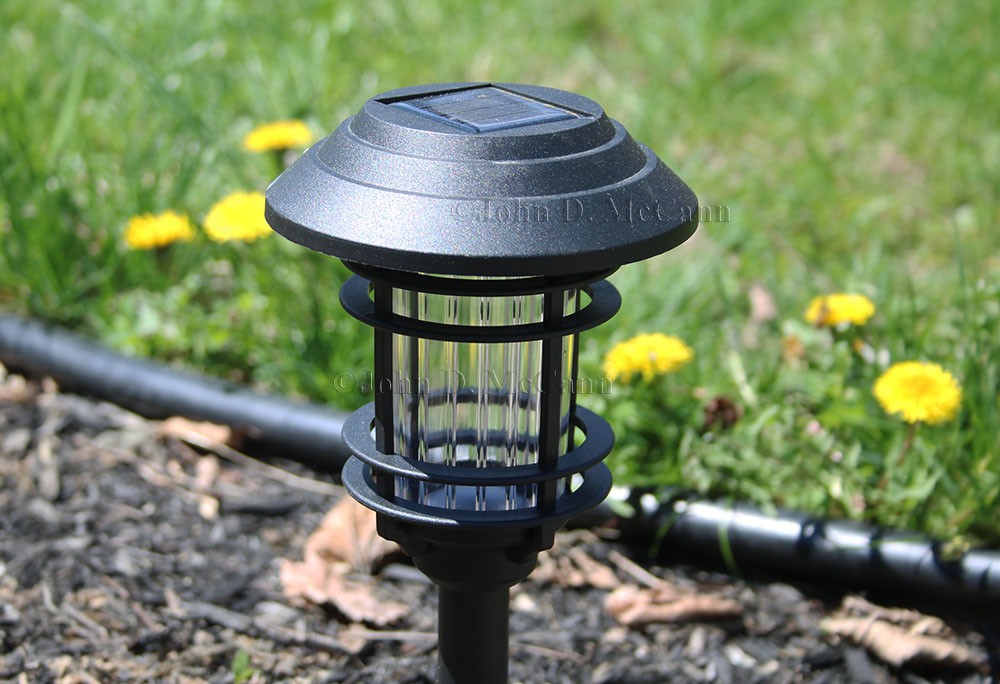
I often hear people say that they wish they could take advantage of solar power, but it is just too expensive and elaborate to set up. I disagree, as all solar power does not consist of a large array of solar panels, battery controllers, and inverters. It can be very simple as a supplemental power source during an emergency.
Most people who have prepared for an emergency have a crank radio which often has a small solar panel on it as well. This is “Simple Solar.” But many people don’t think outside the box and use those easy to find items that run on solar power. Sometimes people already have such devices, but fail to recognize them for use inside the house.
At the end of October, 2011, we actually had a Nor’easter Storm in New York. We ended up getting ten to twelve inches of snow. Normally not a problem, but when I heard it was coming, I knew we would have a major power outage as the majority of the leaves had not yet fallen off the trees. I was correct and 168,000 people went without electric from three to ten days. The other problem was it was unseasonably cold.
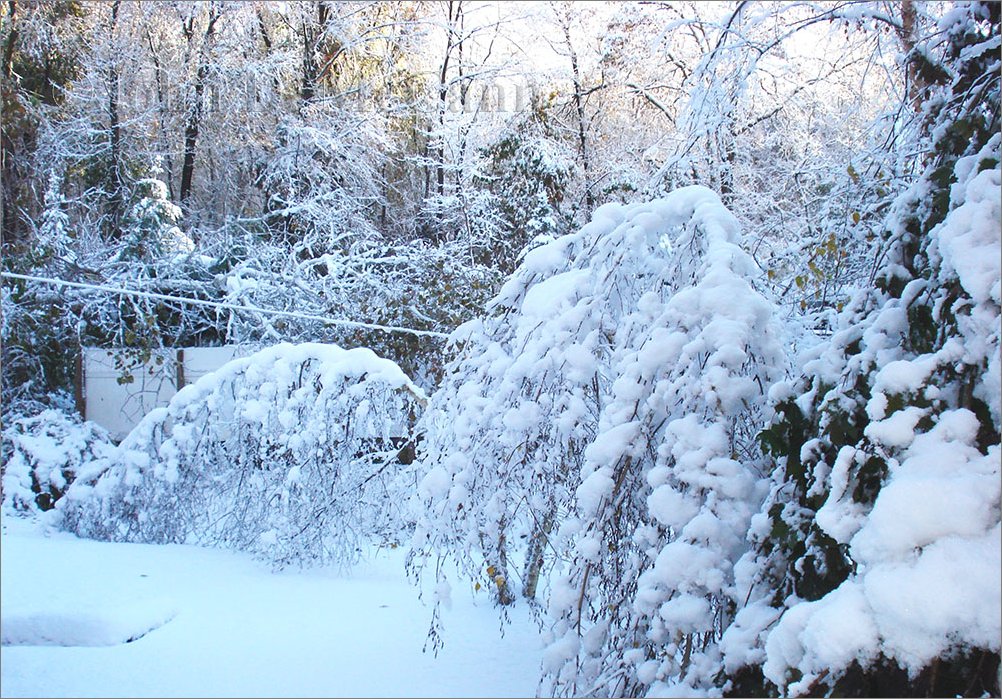 A Nor'easter knocked out our electric for three days in late October, 2011.
A Nor'easter knocked out our electric for three days in late October, 2011.
I have a generator for such incidents, but it runs on gas, and I don’t run it full time. When we got up in the morning we ran the generator long enough to run the furnace to warm up the house (the temperature in the house was 48 degrees when we got up in the morning), run the well pump, and one refrigerator. I have gas for cooking and hot water. When we got up in the morning we heated the house, took a shower, washed dishes, filled various pots with water, then turned the generator off.
Without the generator running at night, we still needed lights, and even though we have oil lamps, flashlights, and head lamps, we found that by using simple solar devices, we could light the house for free, and also charge our cell phones. Here is how we did it.
Many people have landscape lights that run on solar, but few people think about taking off the tops and using them in the house as supplemental lighting. We found that each top could be placed in a room for enough lighting to walk around. Just take the tops off with a twist and turn them upside down. Being the solar strip on top is now in the dark, the LED light comes on. We used them on our night stands at night.
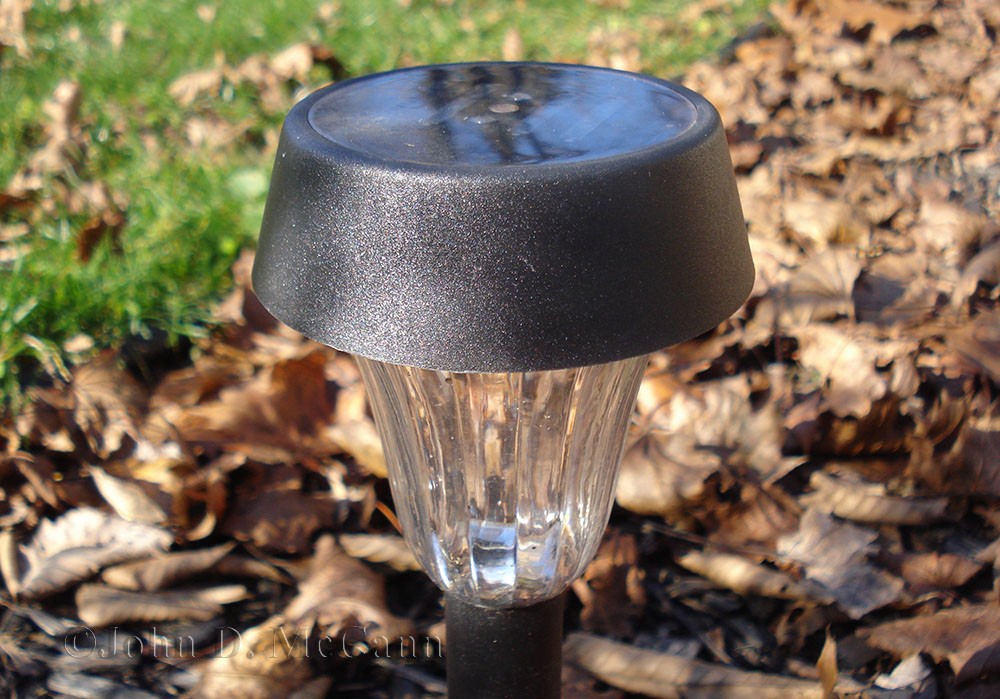 This is a typical landscaping LED Solar Light.
This is a typical landscaping LED Solar Light.
One thing you might want to look for, is solar landscape lights that have a small slide switch to turn them off when you don’t want them on, such as the ones we used on our night stands. When we went to bed, we could switch them off, and conserve the internal rechargeable batteries at the same time.
Some of them don’t have don’t have switches but you can easily modify them with a micro switch from an electronics store, like Radio Shack. I have opened the bottom and drilled a small hole, I then insert a small micro switch and connect it by cutting one of the wires to the battery and connecting one end to each terminal on the switch. Works like a charm. You can even get fancy and label the “On” and “Off”, like I did, so you don’t have to guess.
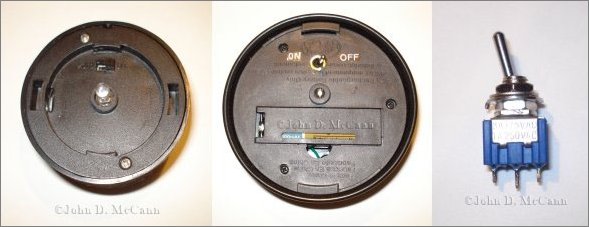 The left head has a small slide switch that allows you to switch the light on and off. The center head
The left head has a small slide switch that allows you to switch the light on and off. The center head
is one that I modified with a small micro switch so it can also be turned on and of. The right photo
shows a typical micro switch which I used to modify the center light.
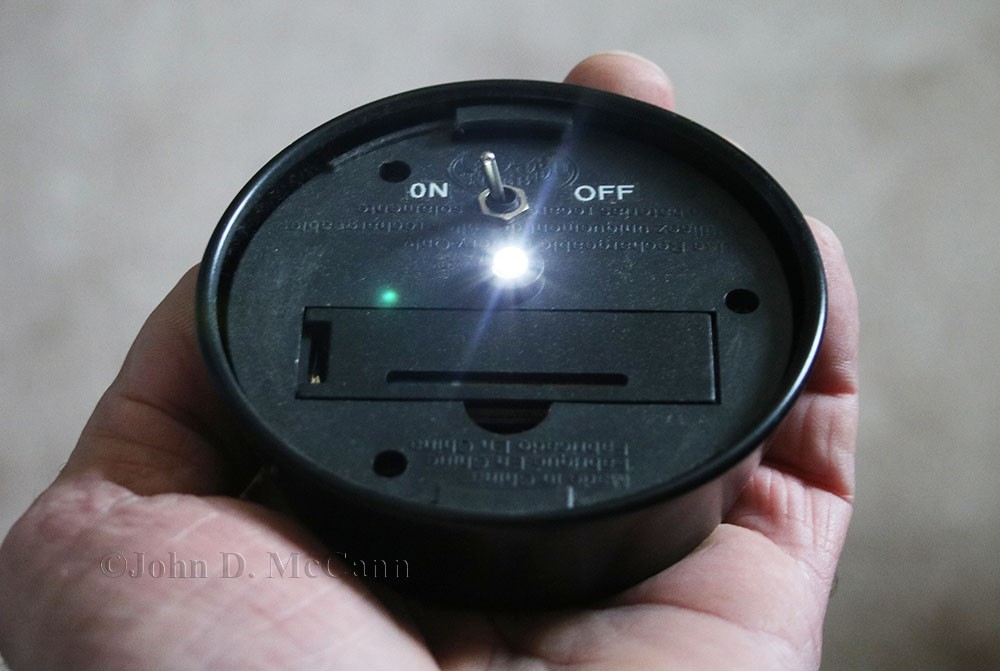 This photo shows the light given off by one of the small LED landscaping light heads. This was taken
This photo shows the light given off by one of the small LED landscaping light heads. This was taken
while it was light out, and it provides even more light in the dark.
It should also be noted that many of the battery compartments for landscaping lights hold AA Batteries. Not all do, but you can check before you purchase them. If they do, you can use them to recharge your AA rechargeable batteries. Just leave them in the yard during the day and your batteries will be recharging. You can then use them in an emergency for radios, head lamps, etc.
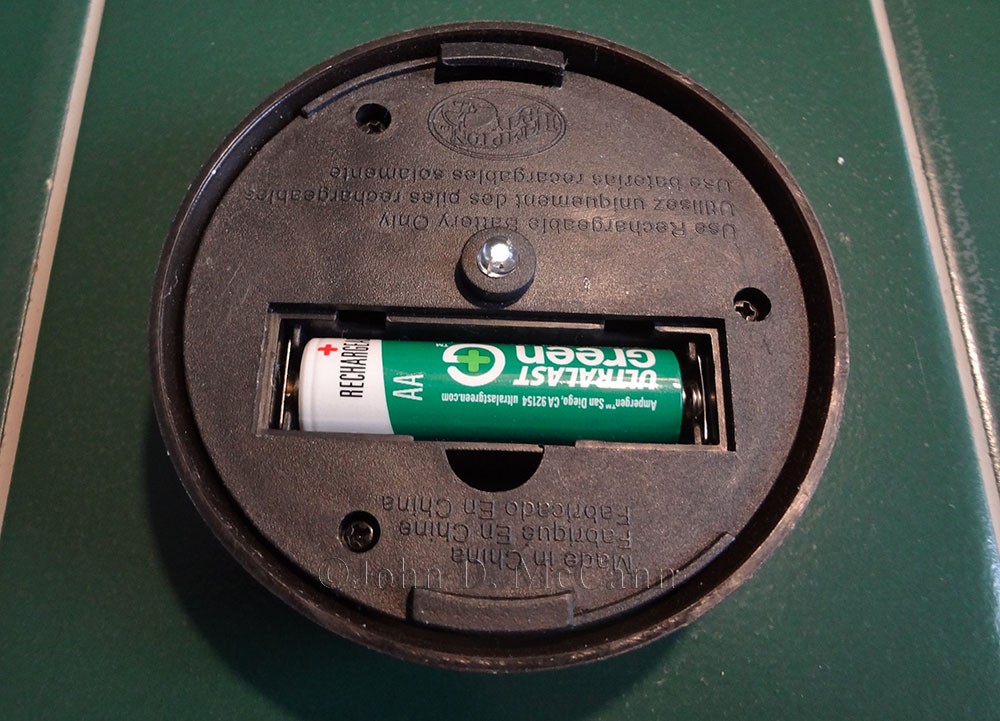 This landscape light uses a standard AA rechargeable battery so you can use these lights to recharge
This landscape light uses a standard AA rechargeable battery so you can use these lights to recharge
all your rechargeable AA batteries.
Another useful solar device available for outdoor landscaping use is a solar spot light. When I saw this I never planned on using it outside. I purchased it just for use inside the house. It is very useful because the solar charging panel is on a separate unit that can be left on a windowsill that normally faces the sun. The spotlight, which has a very bright LED, comes with 20 feet of wire and can be plugged into the solar charging panel unit. It normally comes with a mount that sticks into the ground and allows you to pivot the light up or down. I wanted to be able to clamp it to various things in the house and so I modified it by removing the ground stake and bolting a clamp to it. It can now be clamped to a window ledge, side of a bookcase, etc.
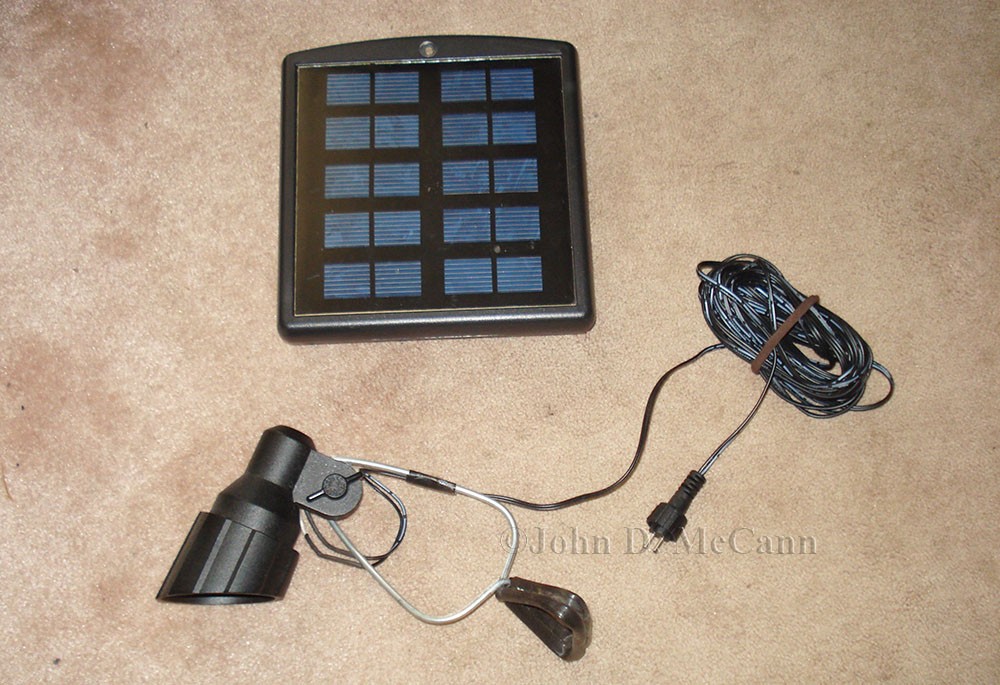 This is a view of the outdoor landscaping spotlight. The upper left shows the solar panel charging
This is a view of the outdoor landscaping spotlight. The upper left shows the solar panel charging
unit and below is the spotlight modified with a hand clamp for mounting in various locations.
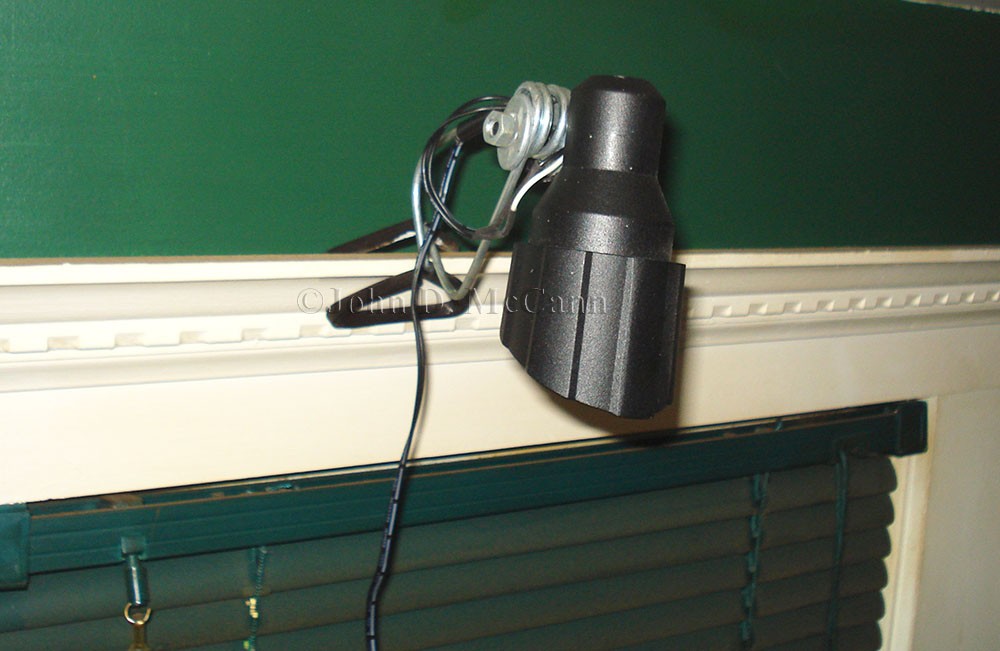 A view of the solar spotlight mounted over a windowsill to illuminate a room at night.
A view of the solar spotlight mounted over a windowsill to illuminate a room at night.
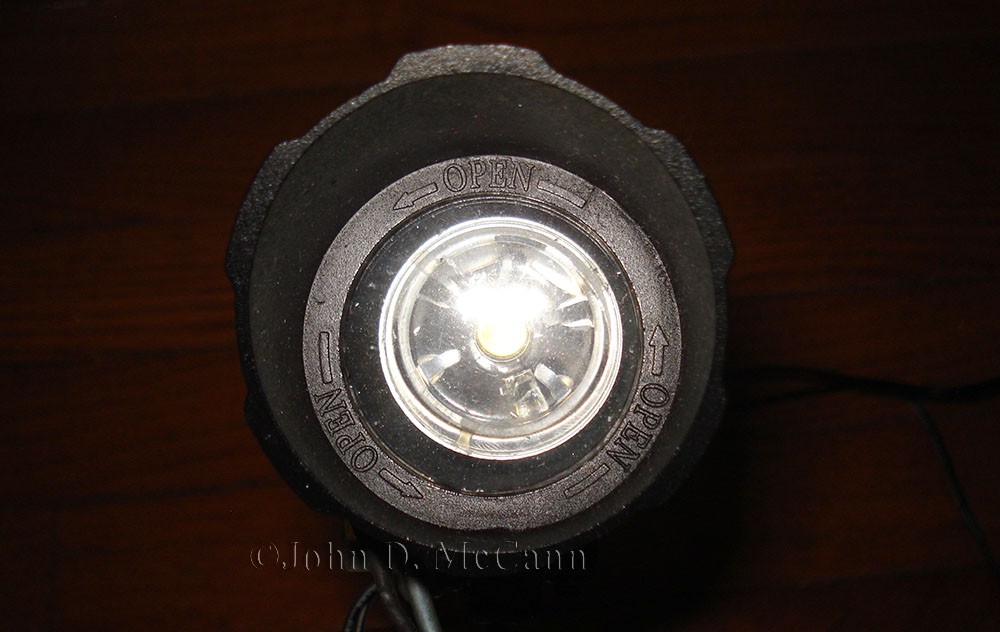 This shows the very bright LED light provided in the solar spotlight.
This shows the very bright LED light provided in the solar spotlight.
Another very handy device, which I didn't have back then, but have purchased since, is called the LuminAid Solar-Powered Inflatable Light. This a great little solar device that folds very small and flat and can easily be kept on a south-facing window ledge to keep it charged. When you need it, you unfold it, blow it up, and it becomes an emergency light. I was impressed with the amount of light the LuminAid gave off, and even did a video review of it so you could see the actual illumination given off in the dark. If you would like to see that video click HERE, and it is at the end of the product description.
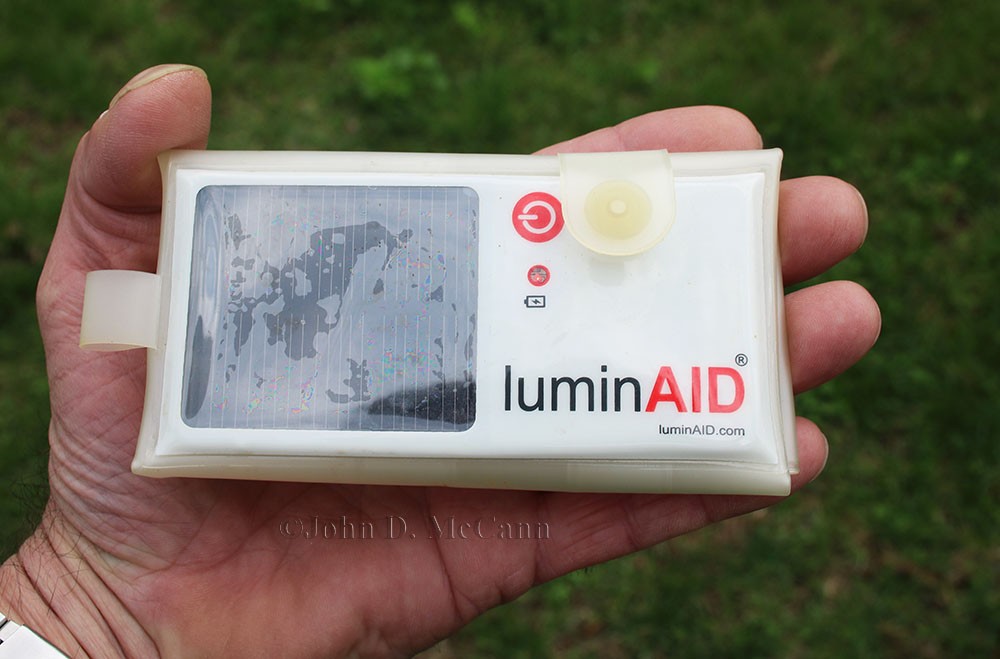 The LuminAid Solar Powered Inflatable Light is hand sized when folded up.
The LuminAid Solar Powered Inflatable Light is hand sized when folded up.
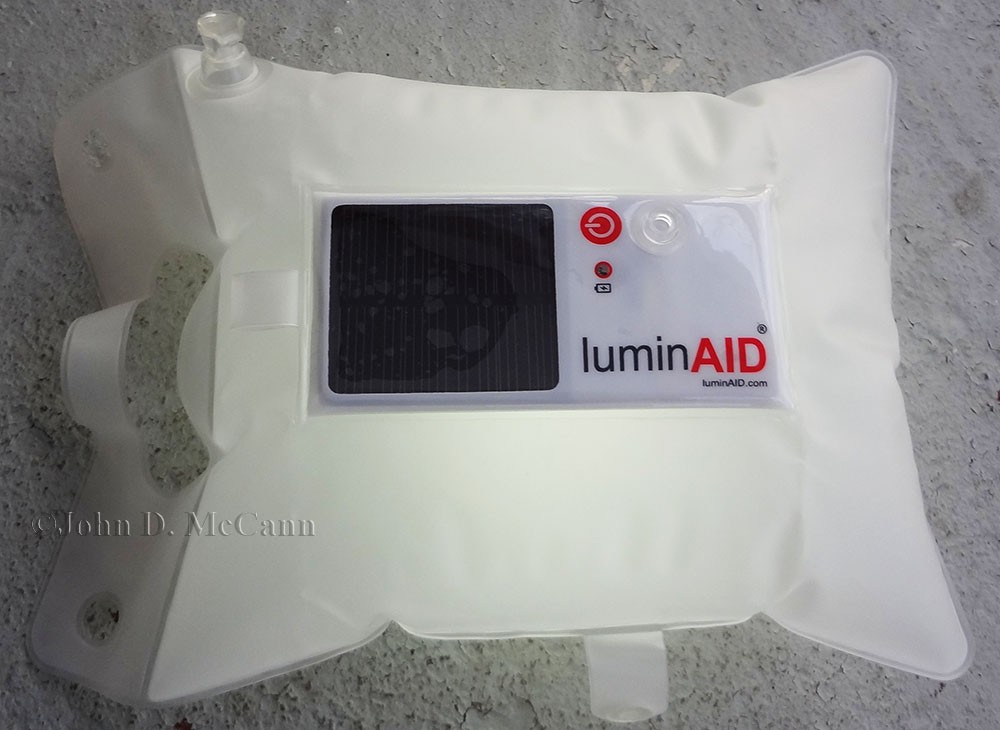 When unfolded and blown up, it becomes a lantern that is waterproof and floats.
When unfolded and blown up, it becomes a lantern that is waterproof and floats.
In order to keep the above discussed items charged, I placed a board in a south-facing window at an angle. I then placed the various items on the board, holding them in place with a small nail that sticks up and holds the item. This board stays in the window and when we need a light they are ready to go. When night comes we have free light without wasting batteries or oil in our lamps. If nothing else these devices can supplement what you use for lighting.
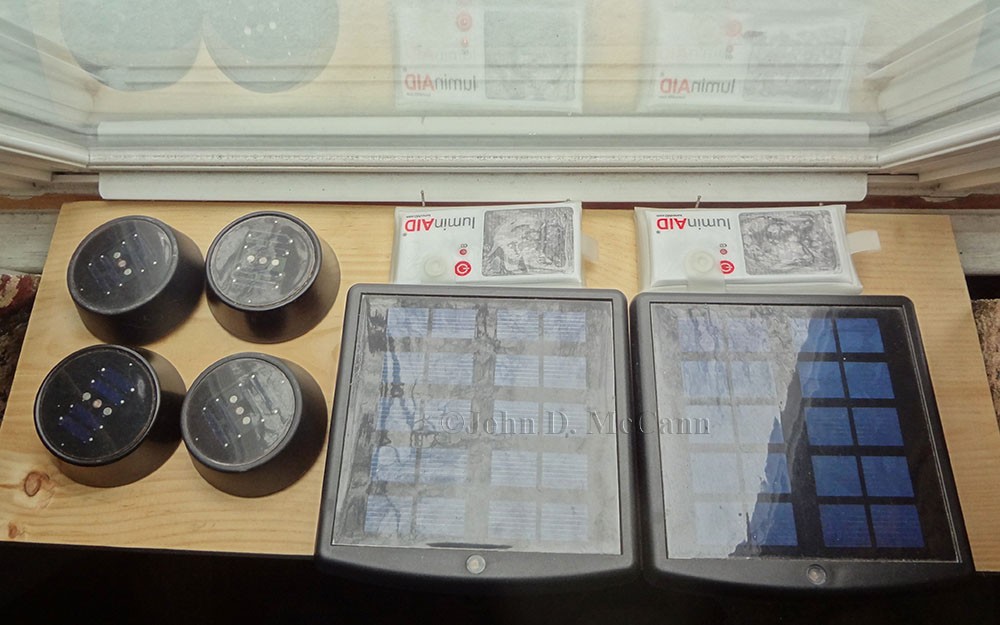 Various landscape lights, solar panels, and two LuminAids that stay in this south-facing window.
Various landscape lights, solar panels, and two LuminAids that stay in this south-facing window.
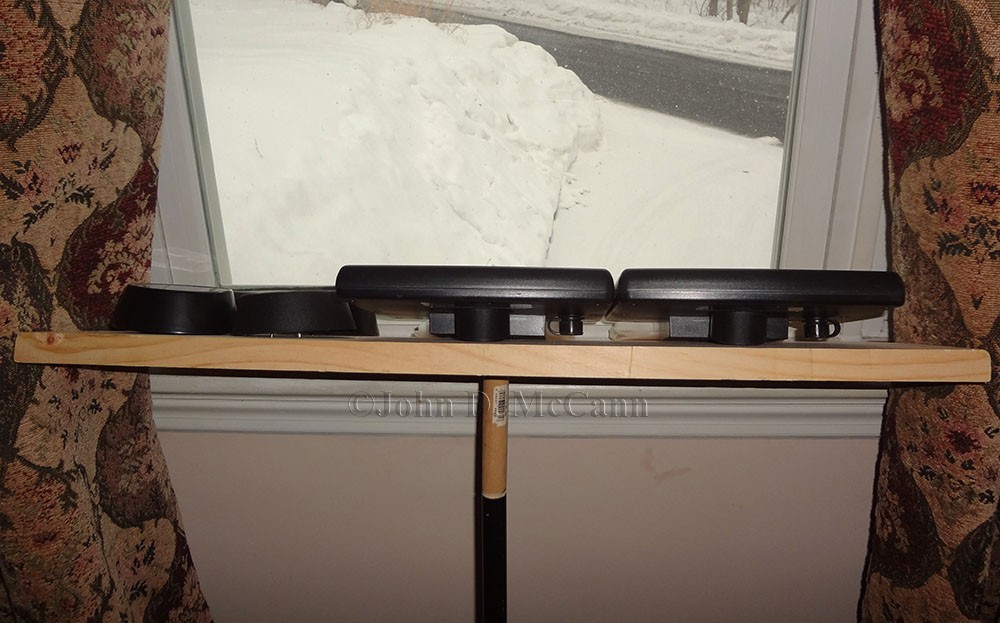 A simple leg holds the recharger board at an upward angle in order to better catch the sun.
A simple leg holds the recharger board at an upward angle in order to better catch the sun.
In order to recharge our cell phones, IPad, IPod, Kindles and spare rechargeable batteries we use various products from GoalZero. For batteries and cell phones, we use the Guide 10 Plus Solar Kit which allows us to charge either AA or AAA batteries (which can be used for battery operated devices like a headlamp, radios, etc) and our cell phones either using an included solar panel, or with AC using a USB cable. With the batteries in the device, it is also a flashlight with a built-in LED, and will also power two optional lights that plug into it. A really handy and versatile device.
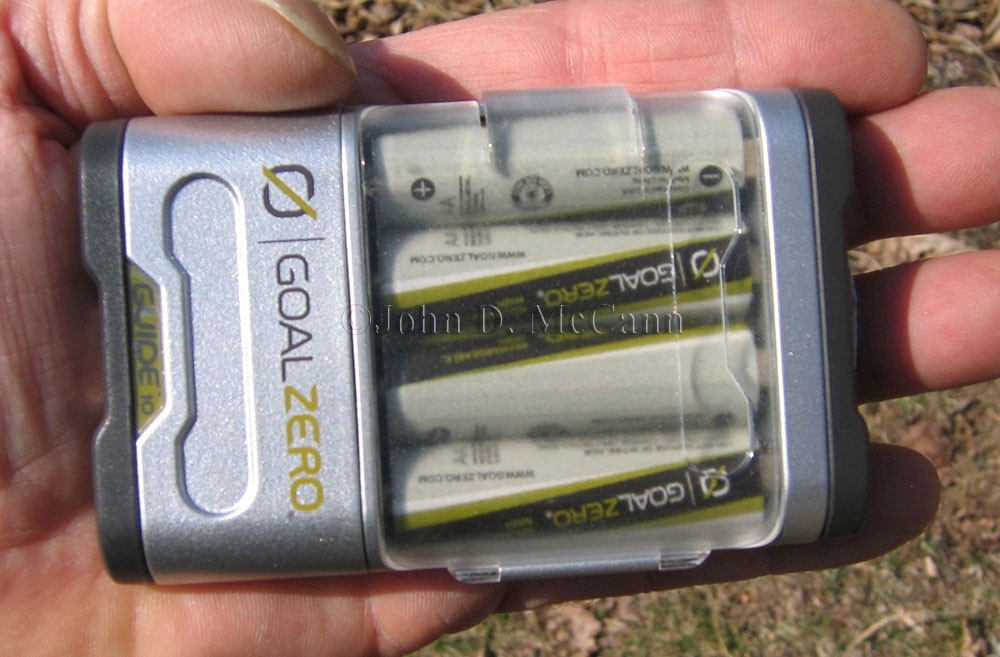 The Guide 10 Plus Recharger is small enough to fit in your hand.
The Guide 10 Plus Recharger is small enough to fit in your hand.
Another GoalZero product we like is the Sherpa 50 Recharger Solar Recharging Kit. It is an ultra-portable power supply to keep laptops and tablets, and other electronic devices charged. Being it has a 12V output as well as a 5V USB output, you can even use it to run a 12V television panel, as well as other 12V devices. It also has a 19V laptop output with charging cable. We purchased several of these units with the Sherpa 13 solar panels and a couple with the AC inverter. They come in real handy when the power goes out and we also use them when we are in the field. We keep the Sherpa 50's plugged into AC power all the time which is an advantage with these units. They have built in charge controllers so you don't have to unplug them when they are fully charged. When the power goes out, they are ready to go. If you would like more information on the LuminAid Solar Powered Inflatable Light or GoalZero solar products click HERE.
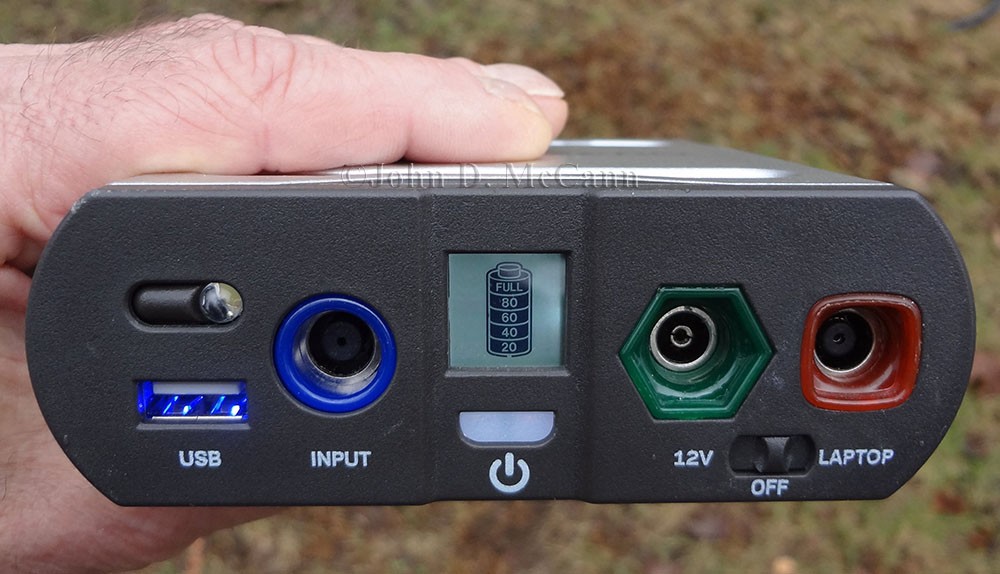 The Sherpa 50 being hand held to show the size of the unit.
The Sherpa 50 being hand held to show the size of the unit.
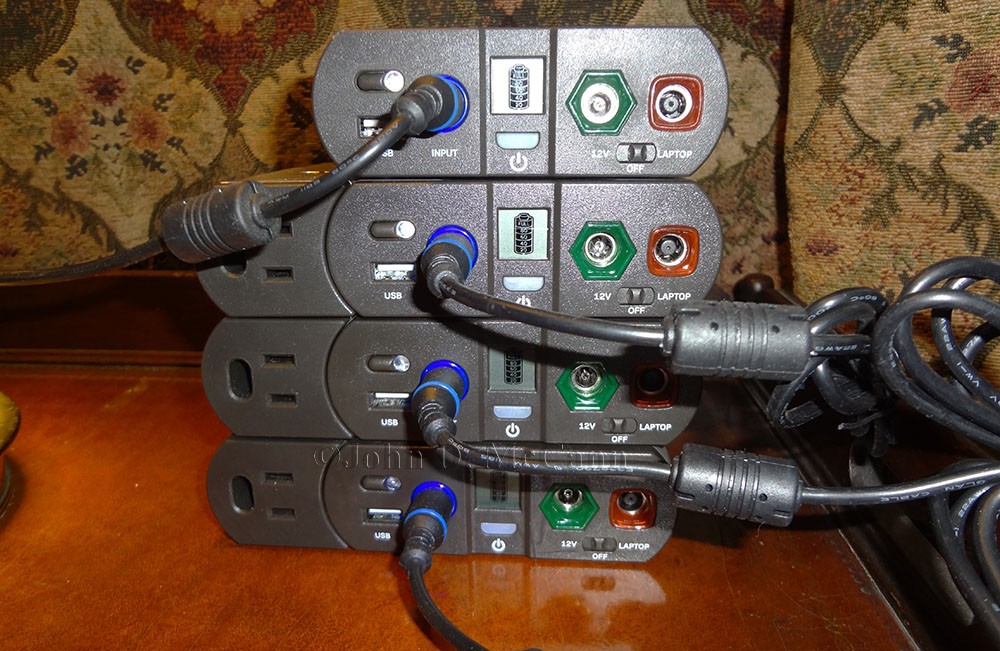 Our Sherpa 50's remain plugged in on a small table so they are ready when we need them.
Our Sherpa 50's remain plugged in on a small table so they are ready when we need them.
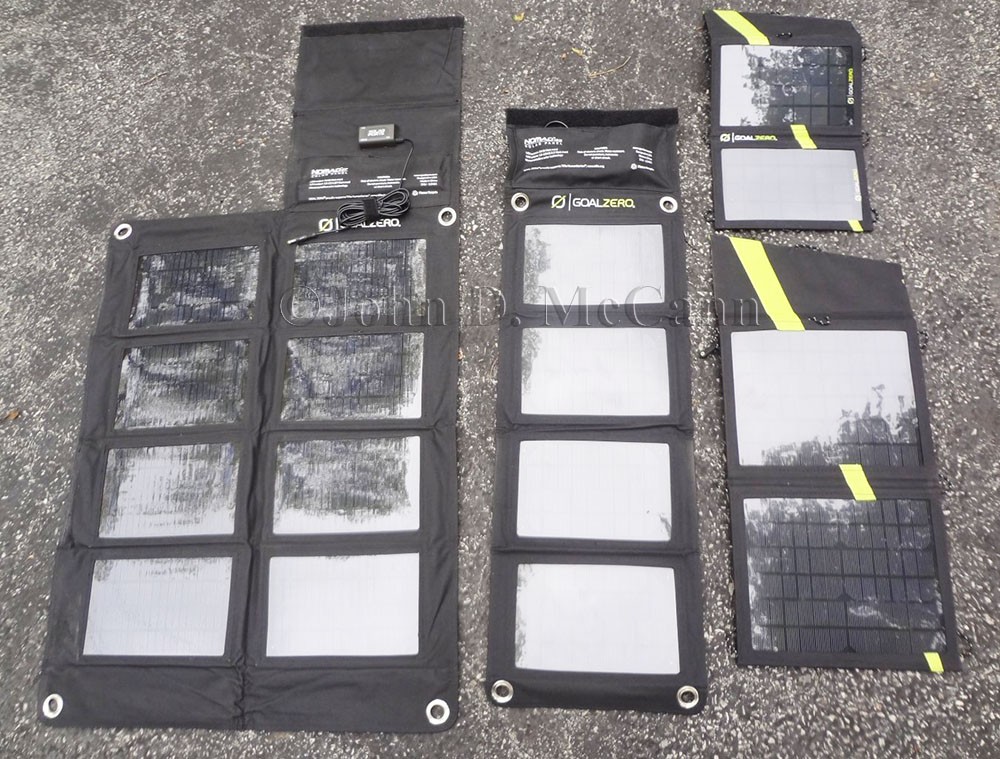 This shows various portable solar panels that we uses to charge the Guide 10 Plus and Sherpa 50's.
This shows various portable solar panels that we uses to charge the Guide 10 Plus and Sherpa 50's.
 This shows one of our larger portable solar panels hanging on the inside of a south facing window
This shows one of our larger portable solar panels hanging on the inside of a south facing window
when the power goes out. It can recharge various devices,or recharge batteries.
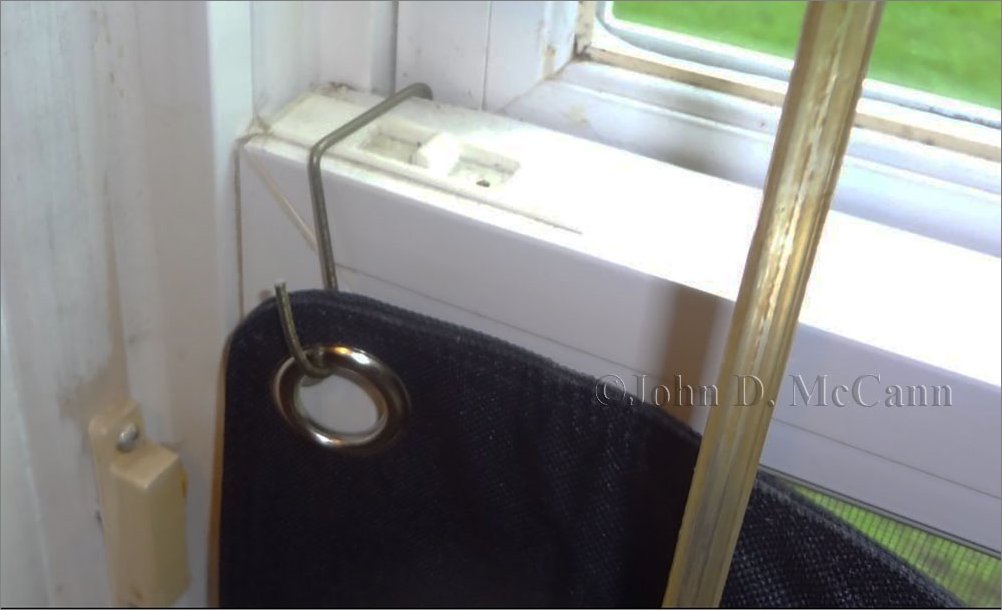 This is closer view of the simple hooks I made from coat hanger wire in order to hang the portable solar
This is closer view of the simple hooks I made from coat hanger wire in order to hang the portable solar
panel to the front of the south facing window.
 A view of the portable solar panel hung in the window from the outside. Although not ideal for
A view of the portable solar panel hung in the window from the outside. Although not ideal for
optimum collection of the sun, it does work.
As you can see, there are various ways to harness the energy of the sun using solar devices, even when you can’t afford large panels and all the accessories. Think outside the box and utilize what you have. Save those batteries and lamp oils for when there is no sun for a couple of days!
We hope you enjoyed this article and will help support our efforts by checking out our products. As always, Be Prepared To Survive!
Copyright © 2017 by John D. McCann


